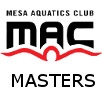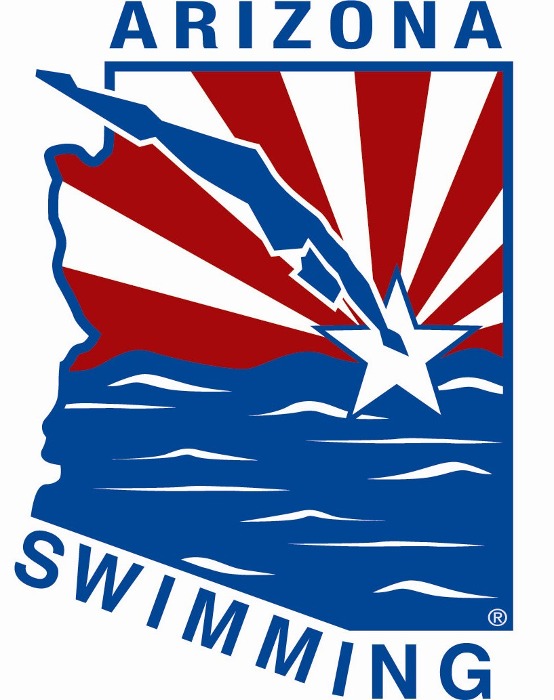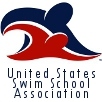The History of Mesa Aquatics Club
MAC has served local athletes, especially youth, with support from both the City of Mesa and Mesa Public Schools since at least the early 1950s. On at least two occasions the program was under a different name, but continuing city and school support have allowed aquatic opportunities for Mesa’s youth to continue uninterrupted from the beginning.
MAC 1.0
Mercier Willard was a Mesa schoolteacher who worked at city pools in the summer. He built a rectangular 13 yard long pool in his back yard which his wife, Mary, used to teach swim lessons. That combination lead to the founding of Mesa Aquatic Club, which initially worked out in Mesa pools in the summer (primarily Rendezvous Park Pool, a 40 meter weekly fresh fill tank just over the left field fence of the baseball stadium with the same name where the Chicago Cubs had spring training for years) and the Willard backyard in the winter, when Mercier would construct a 2 x 4 frame over the pool and envelope it with plastic sheeting. Mary became a legendary age group coach, especially for younger kids, absolutely dominating the state in those ages. Interestingly, the first two MAC related Olympians both started as swimmers but found their true calling as divers, Willard daughter Patsy in 1960 and 1964 and Keith Russell in 1968. Keith had once been on a MAC 10&Un national record relay. Mary retired in 1966.
ARIZONA DESERT RATS
When Mary retired, a local valley-wide club, Arizona Desert Rats, rented water in the Mesa pools (Mesa Jr., Escobedo, Kino, Carson, etc.) and continued to make high level competitive swimming available to Mesa kids. Walter Schlueter headed up the “Rats,” along with his wife Nancy. Schlueter coached in Illinois and Oregon before coming to Arizona in the early ‘60s and placed at least one American onto our Olympic team every cycle from 1952 through 1968; he was a respected stroke technician after whom the American Swim Coaches Association once named its Age Group Coach of the Year award. Schlueter had use of multiple pools in Phoenix, Scottsdale, Tempe, and Mesa, as well as being the Head Coach at Arizona State. This lead to assistant coaches often being assigned to Mesa waters. Some were excellent, including Bob Gillett who later coached Olympic Gold Medalist Misty Hyman. In his Mesa time, Gillett brought Mary Ann Graham, arguably Mesa‘s best home grown swimmer ever, to the level of scoring at the US Nationals in 1970. As good as Gillett and some other assistant coaches were, some Mesa parents wanted the lead coaches of their club working with the kids closer to home. Thus, MAC 2.0.
MAC 2.0
Mesa parents eventually convinced the city to work with their “new” club, rather than continue to rent water to the Desert Rats. Among those parents was Sandra Baldwin, who moved through the ranks of amateur sports from MAC President, to AZ Swimming General Chair, to USS Swimming President and finally the US Olympic Committee. Ron Johnson had left one of the top clubs in Ohio to take over the Mexican Olympic Team in 1966, as they hoped to be proud of their performances in the 1968 Olympics they were about to host. Within 2 years Johnson had developed a world-record holder at 1500 meters and a Gold Medalist in the 200 Breaststroke, a race that remains as one of the athletic highlights in the history of that country. After the Munich Olympics, Johnson was brought in and formed a new Mesa Aquatics Club (Johnson arranged for other aquatic disciplines such as Synchronized Swimming to be available under the MAC umbrella) and had an 8 fold increase in membership within the first year. The primary pools used were at Kino Jr. High, a 50 Meter x 25 Yard facility with a diving well “T” that opened in 1969, and Powell in winters. Graham made a jump forward to qualify for the 1973 US World Championship team. Schlueter had resigned in 1975 from the ASU position, and Johnson filled that position on an interim basis in 1975-76 while also continuing with MAC. In an ironic twist, in his last summer with MAC Johnson’s Olympic Trials training group included Melissa Belote, a three-time Gold Medalist from Munich 1972, who he had begun coaching that year at ASU, while Graham had chosen to train in California that summer with Mission Viejo. Graham won the US Trials and Belote was second, with both making the 1976 team. Johnson then left MAC to take the full-time ASU position where he continued nearly 20 years.
MAC continued after Johnson left, through numerous coaches including Mark Lautman, Steve Cattolica, Marvin Williams, Jim Nickell, Mark Taylor, among others, with varying levels of success. Mike Bruner, a 2-time 1976 Gold Medalist, followed his coach Bill Rose to Arizona when Rose was named the ASU women’s coach. Cattolica worked with Rose in preparing Bruner for the 1980 Olympic Trials, with Bruner representing MAC that year. Nickell developed a great group of young swimmers who won a Junior National title in the late 80’s, as well as the bulk of the male and female swimmers at Dobson High who, in the same year, interrupted the multi-decade long AIA state high school dominance of prep schools Brophy and Xavier.
DESERT THUNDER AQUATIC CLUB
In the 90’s, MAC had transformed into a coach-owned entity. Taylor wanted to move into college coaching (he spent a decade or so as head coach at the University of Houston) and transferred his interests to Steve Shaffer (Desert Aquatics in Awatukee) and Brad Hering (Arizona Thunder Aquatics at Red Mountain CC), who then combined to form Desert Thunder Aquatic Club, which operated primarily in Mesa water at Kino. After a few years, and departure of the initial coaches, a groundswell (tsunami?) again rose, just like in the early ‘70s, for a Mesa entity to provide a team for Mesa kids.
MAC 3.0
Today’s Mesa Aquatics Club has undergone re-birth on many levels, both through facilities and organization. For many years new pools in Mesa were built when new junior high schools came into being. Many of the Mesa pools had been operating for so many years that, gently put, re-furbishment was needed. Also, key was Mesa Public Schools Athletic Director Steve Hogen’s development of an organizational model for youth sports clubs associated with the schools in several sports. Steve’s son Ben was an individual and relay swimming medalist at the AIA State Championships, giving Steve an additional bit of personalized insights to youth aquatics, in addition to the multi-sport athletic administrative skills he had developed through his work. The new MAC grew out of the overlapping timing of the substantial re-building of the nearly 40 year old Kino Junior High pool into an outdoor state-of-the art multiple tank recreational/competitive aquatic facility (closed 2008; re-opened summer 2009) and formation by Hogen of the new MAC as a swimming version of the organizational model he had successfully implemented in other sports. Brad Hering returned to Arizona as the initial coach of MAC 3.0, with some initial organizational support from Sam Hewson, who had swum for Johnson at ASU as a teammate of Hering and had long ago done his student teaching with Hogen. Paul Smith, with wife Laura, initiated a vibrant Masters swimming program and were eventually chosen by Hogen to direct the entire program. In just over 2 years the new club has grown to registration of over 480 USA Swimming / USMS athletes in 2011. Kino has proven to be a wonderful facility, hosting tremendously successful AIA Championships in 2009 and 2010 and in April of 2011 the US Masters Swimming National Championship, with about 2000 swimmers and glowing reviews from all participants. While Kino was being re-built, Hogen also was instrumental in construction of a new pool at Skyline HS, Mesa’s first pool at a high school. It is a mirror image of the new Kino and has played host to the AIA Championships since 2011. The top athlete in the short history of MAC 3.0 has been Breeja Larson. Breeja literally came out of nowhere (Idaho?) with outlandish improvements her Senior year of high school, placing 2nd at High School State in the 100 breaststroke and leading her medley relay to victory. She went on to Texas A&M where, as a freshman, she was 2nd in both breaststrokes at the D-1 NCAAs, and as a sophomore was the NCAA National Champion in the 100 breaststroke, setting the NCAA record in the event, and was 3rd in the 200 breaststroke. Larson won the first seed spot on the 2012 US Olympic Team in the 100 breaststroke and finished 6that the Olympic Games in London. She also earned a gold medal by swimming for the winning US team in the preliminaries of the 4X100-meter medley relay. In the fall of 2012 MAC broke 500 registered age group athletes for the year. Mesa Aquatics Club is honored to follow the lead of the City of Mesa's continued commitment to provide excellent aquatics programming and facilities, and looks forward to continued success of all of its members in the future.
Long live MAC3.0!!
Recounted by M. DUNCAN SCOTT









